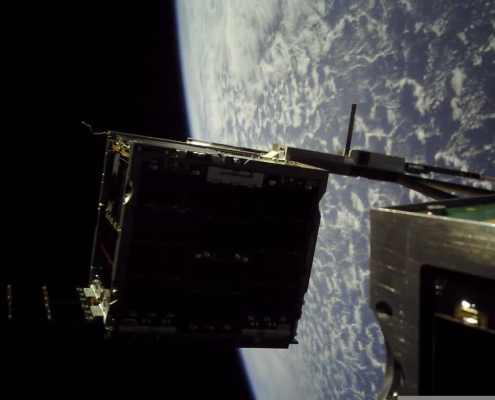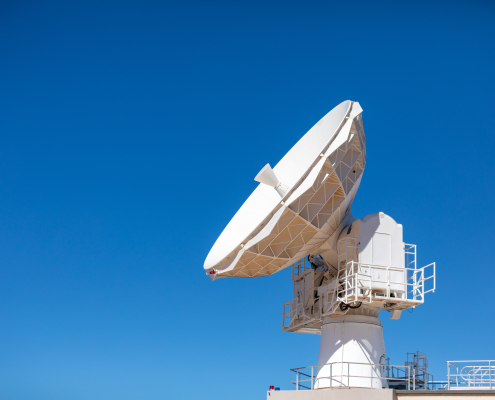Space Situational Awareness
De-risking Defence’s dependence on space-based systems through technical expertise and enhanced capability agility. Innovative, reliable and resilient space constellation technologies across communications, Position, Navigation and Timing (PNT) and Intelligence, Surveillance and Reconnaissance (ISR) for deployed forces, Defence and National Security.
Space is now a warfighting domain that is becoming increasingly congested and contested.
Capabilities and UWA Competitive Advantage
- End-to-end design, construction, data processing and science extraction for the Square Kilometre Array (SKA).
- Specialisation in antenna design, radio-frequency engineering, electromagnetic compatibility, high-performance computing, digital systems and software engineering.
- Space situational awareness and surveillance including tracking near earth asteroids (planetary defence) and artificial debris through the Zadko Observatory and studying surface degradation of satellites.
- World-leaders in ground-to-space laser links for high-precision metrology, laser communications from spacecraft, and quantum key distribution.
- Atmospheric effects and optical propagation projects with NICT, DSTG, and also the US Navy laboratories (the Space and Naval Warfare Systems Command, SPAWAR).
- Ongoing collaborations and projects with space industry and research partners including the European (ESA), Polish (POLSA) and Japanese (JAXA) Space Agencies, French Space Agency (CNES) and national metrology institute (SYRTE), Goonhilly Earth Station, Ariane Group, Slingshot Inc., Thales Alenia Space, SmartSat CRC, the Australian Space Agency, and Defence.
- Development of a space lubricant that does not evaporate in a vacuum.
Key Contacts
Dr Sascha Schediwy
International Centre for Radio Astronomy Research (ICRAR)
Email: sascha.schediwy@uwa.edu.au
Dr David Gozzard
International Centre for Radio Astronomy Research (ICRAR)
Email: david.gozzard@uwa.edu.au
Assoc/Prof David Coward
Science Director Zadko Telescope
Email: david.coward@uwa.edu.au
Outcomes and Impact
- Ground-station support from CubeSat to Deep Space missions.
- Space debris monitoring using either UWA facilities or facilities hosted by UWA.
- Launch tracking capacity (in collaboration with ESA and Ariane Group).
- Detector and sensor development.
- Advanced space data analysis tools.
- Successful delivery of the Murchison Widefield Array (MWA) and several SKA verification systems.
Facilities
- Pawsey Supercomputing Centre, which operates multiple supercomputers, data-intensive machines and storage systems.
- Western Australian Space Centre (WASC) hosts NASA’s satellite laser ranging facility, one of only two stations in the Southern Hemisphere.
- UWA has developed the necessary expertise and specialised equipment to operate a dedicated Astronomy and Space Instrumentation Lab.
- The Zadko Observatory based at UWA’s Space Surveillance Hub hosts rapid response, launch tracking and space debris tracking facilities.
- Western Australian Optical Ground Station (WAOGS), the first laser ground station in the southern hemisphere, based on a 0.7m robotic telescope installed at the UWA campus.



